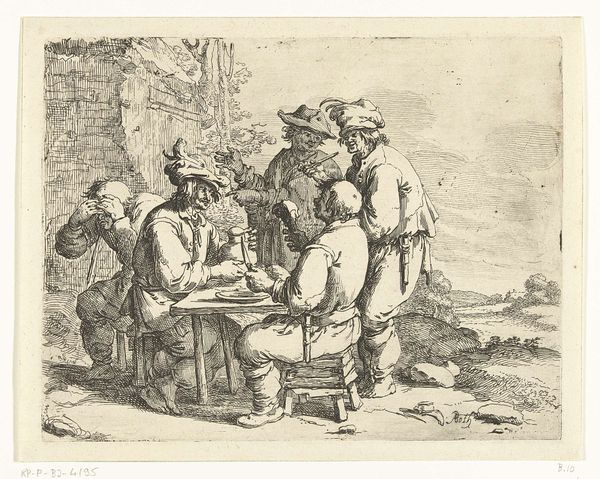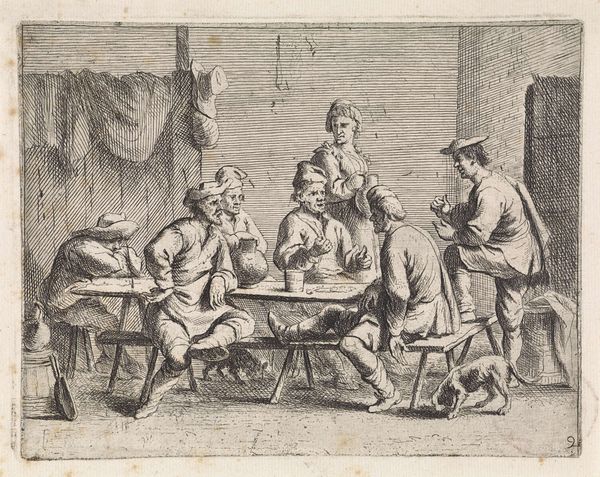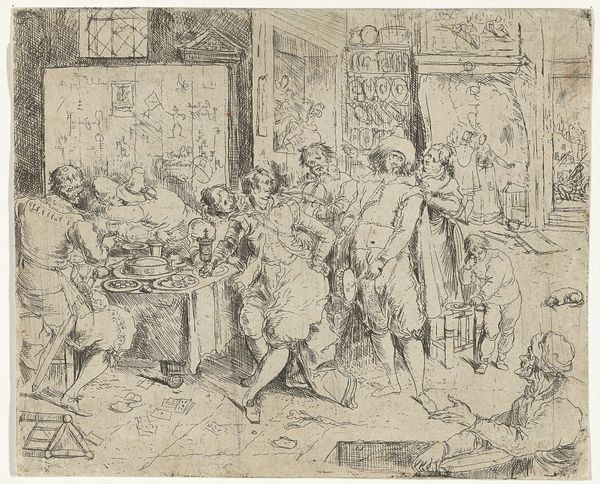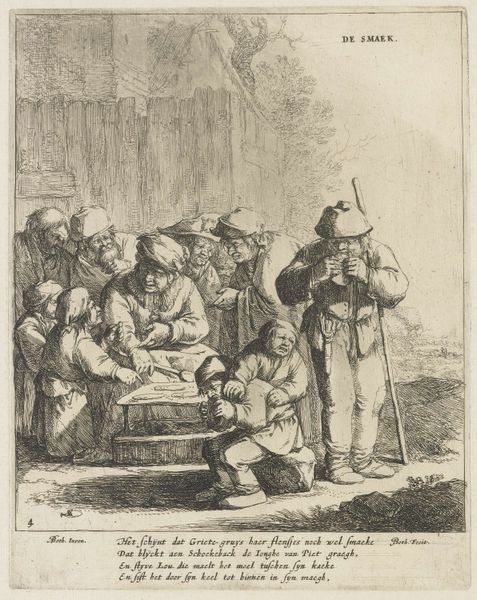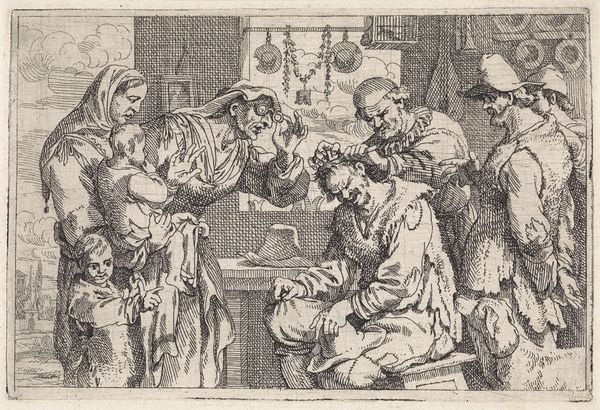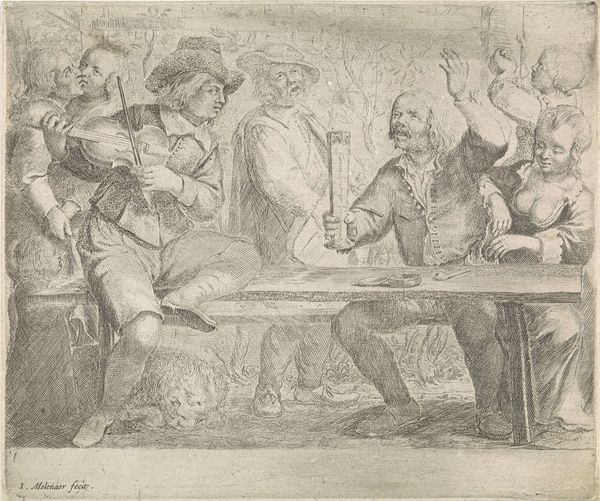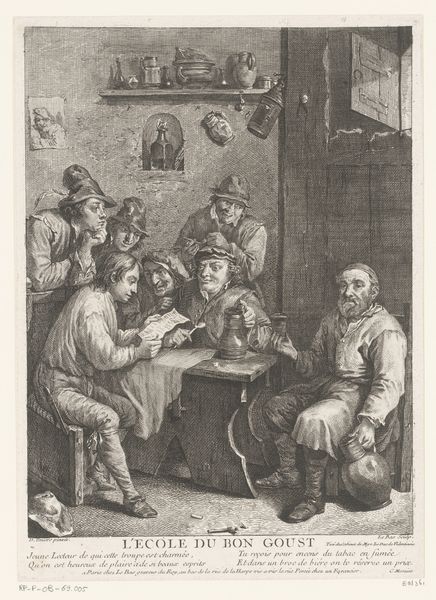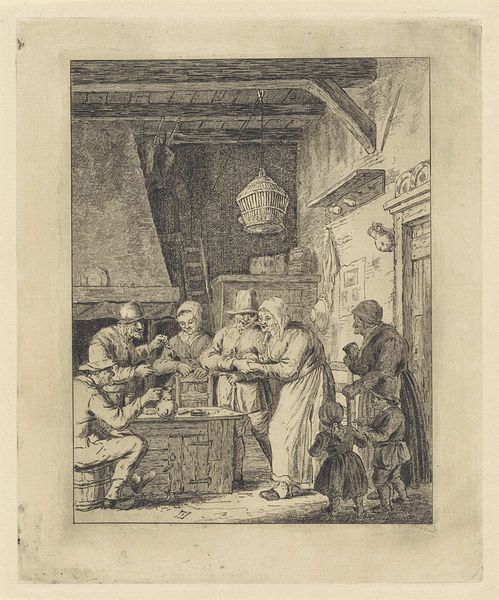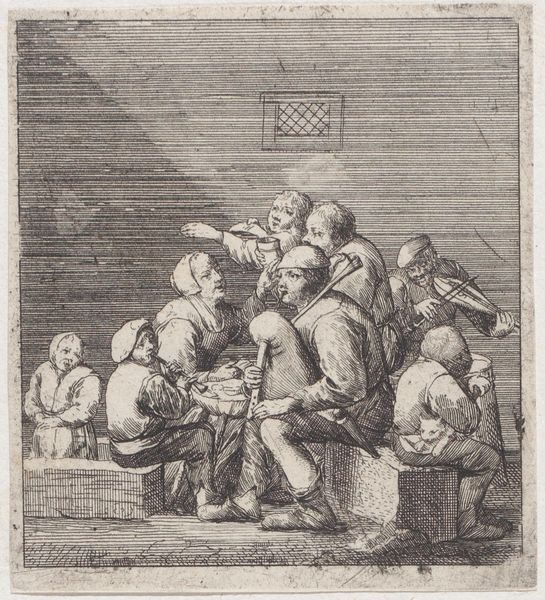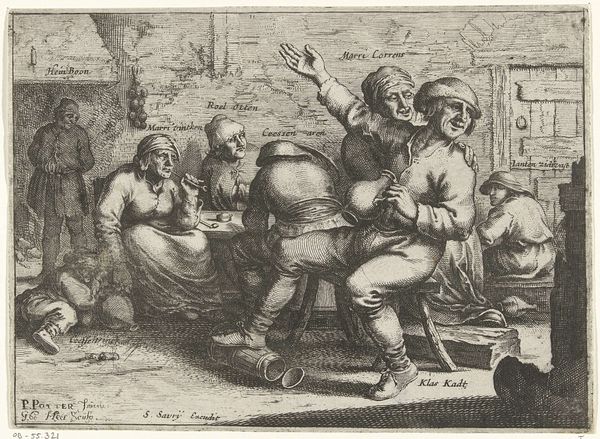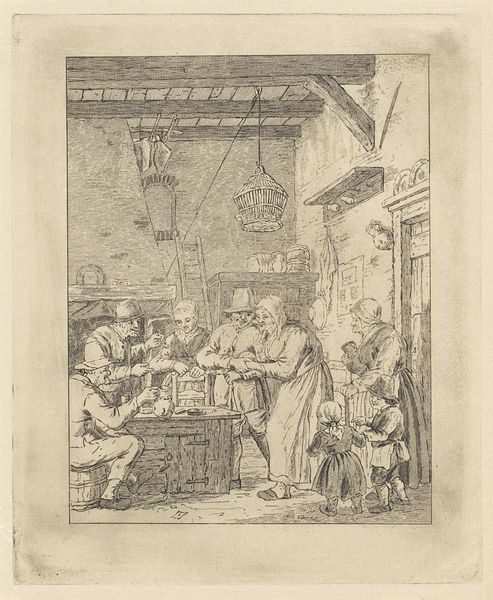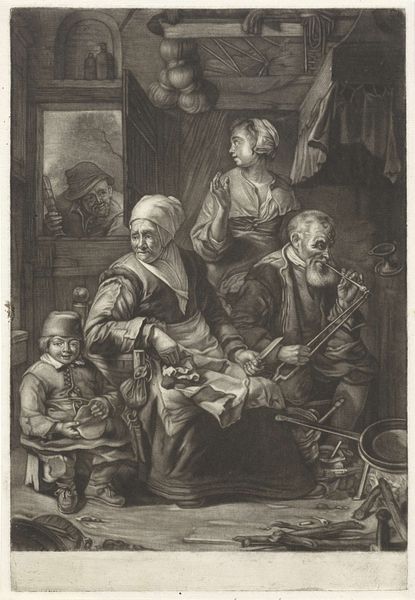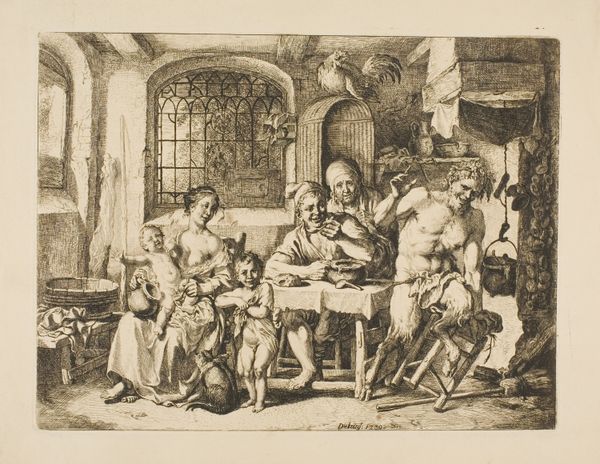
print, etching
#
narrative-art
#
dutch-golden-age
# print
#
etching
#
figuration
#
group-portraits
#
genre-painting
Dimensions: height 175 mm, width 225 mm
Copyright: Rijks Museum: Open Domain
Curator: Welcome. We're looking at an etching titled "Drie boeren en een vrouw aan een tafel in een bordeel," or "Three Peasants and a Woman at a Table in a Brothel," created by Andries Both circa 1622 to 1642. It's part of the Rijksmuseum's collection. Editor: Immediately, I'm struck by the dense, almost frenetic line work. The artist creates a very enclosed, somewhat chaotic feeling in this composition despite its modest scale. Curator: Precisely. Both, along with his brother Jan, were keen observers of everyday life, particularly the lives of ordinary people. Notice how this image speaks to themes of class, pleasure, and social interaction in 17th-century Dutch society. The scene is not simply a depiction, it’s a glimpse into the lives and behaviors of the time. Editor: Yes, and let's look closer at how the composition drives that. The arrangement of figures around the table emphasizes their shared space, their intertwined existence. The dark lines defining each figure create a distinct sense of individual bodies but at the same time the etching technique and tight space causes the figures to merge somewhat, emphasizing the debaucherous theme of communal experience. Curator: Exactly, the crowded composition is symbolic of a lack of restraint, echoing the atmosphere of the brothel. Even seemingly mundane objects – a hanging satchel, discarded utensils – take on significance as they contextualize the story of human folly and material concerns. Editor: And note the almost grotesque, caricatured quality of the faces. Both uses exaggerated features, conveying both humor and a subtle moral judgment. Is he satirizing, or simply recording? The tonal ambiguity enhances the emotional weight of the scene, capturing this fascinating human moment suspended in time. Curator: I'd argue it's a bit of both! Artists in this era often layered observation with subtle social commentary. There's a sense of recognition, even now, with such scenes; an echo of human behaviors that resonate across generations. It allows us to revisit cultural mores that have continued throughout history, with pleasure, debauchery, and humanity still ever-present in a more familiar package. Editor: A potent reminder that visual forms can really offer this bridge through history, giving voice to lived realities captured centuries ago.
Comments
No comments
Be the first to comment and join the conversation on the ultimate creative platform.
